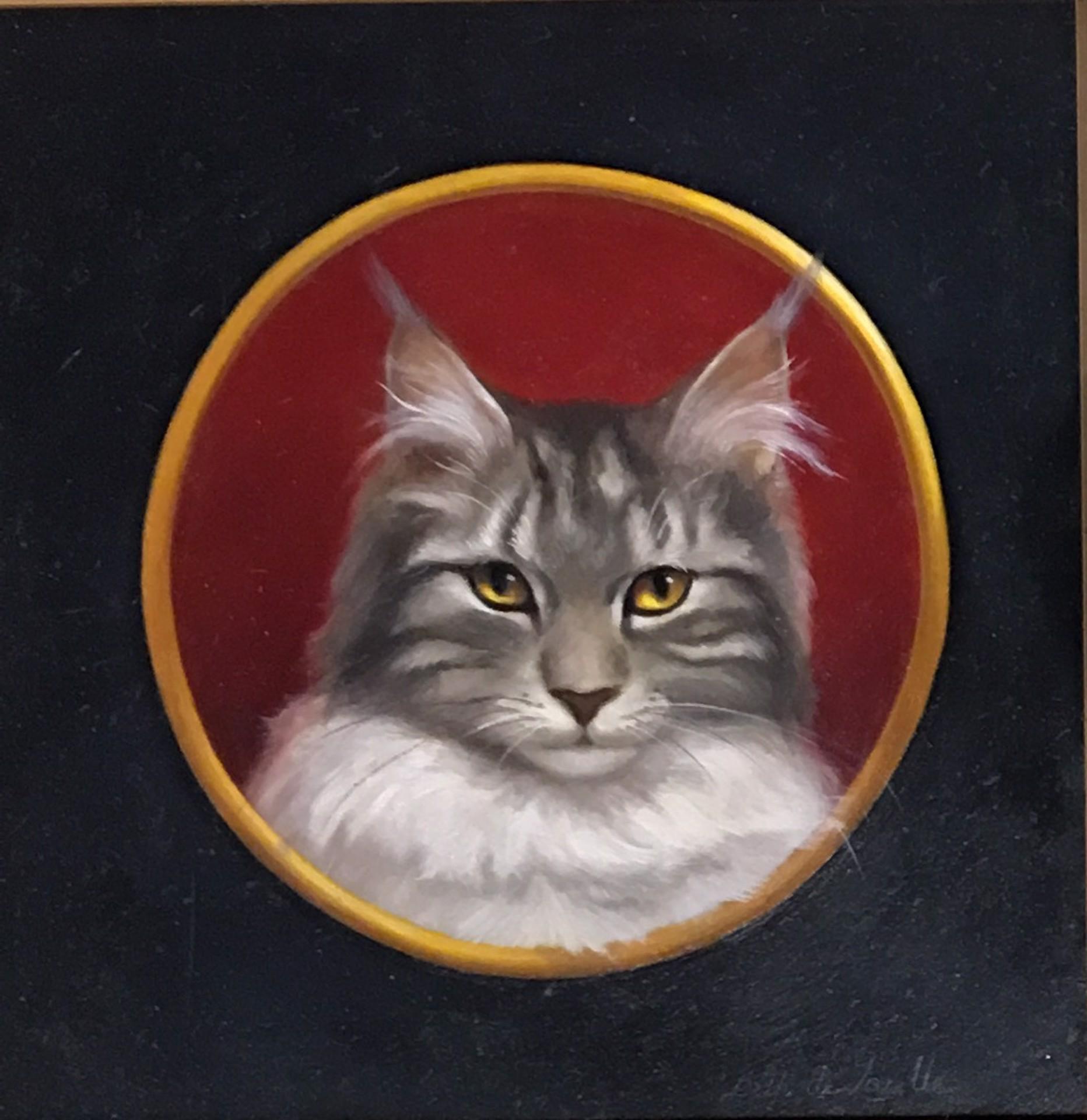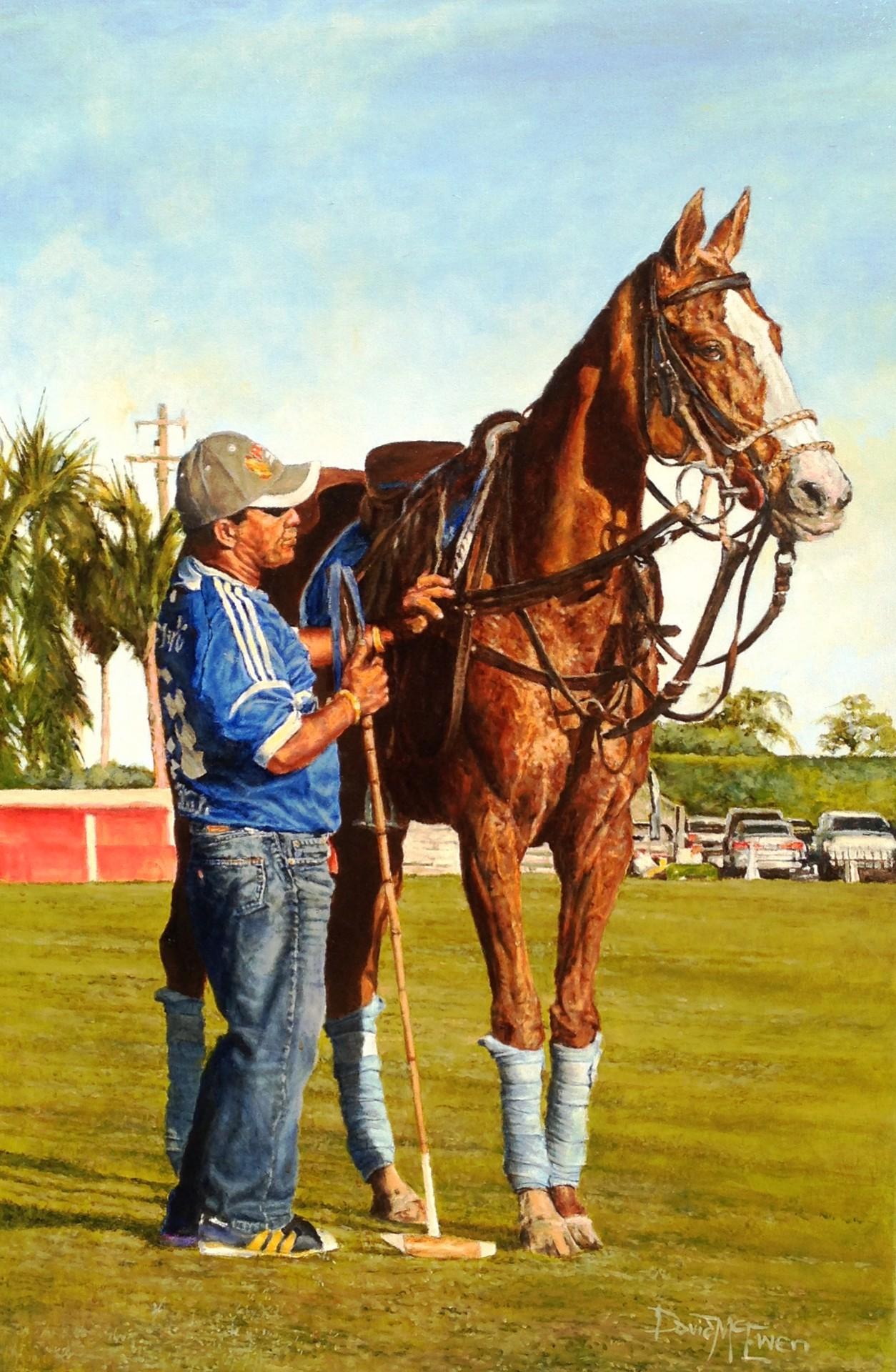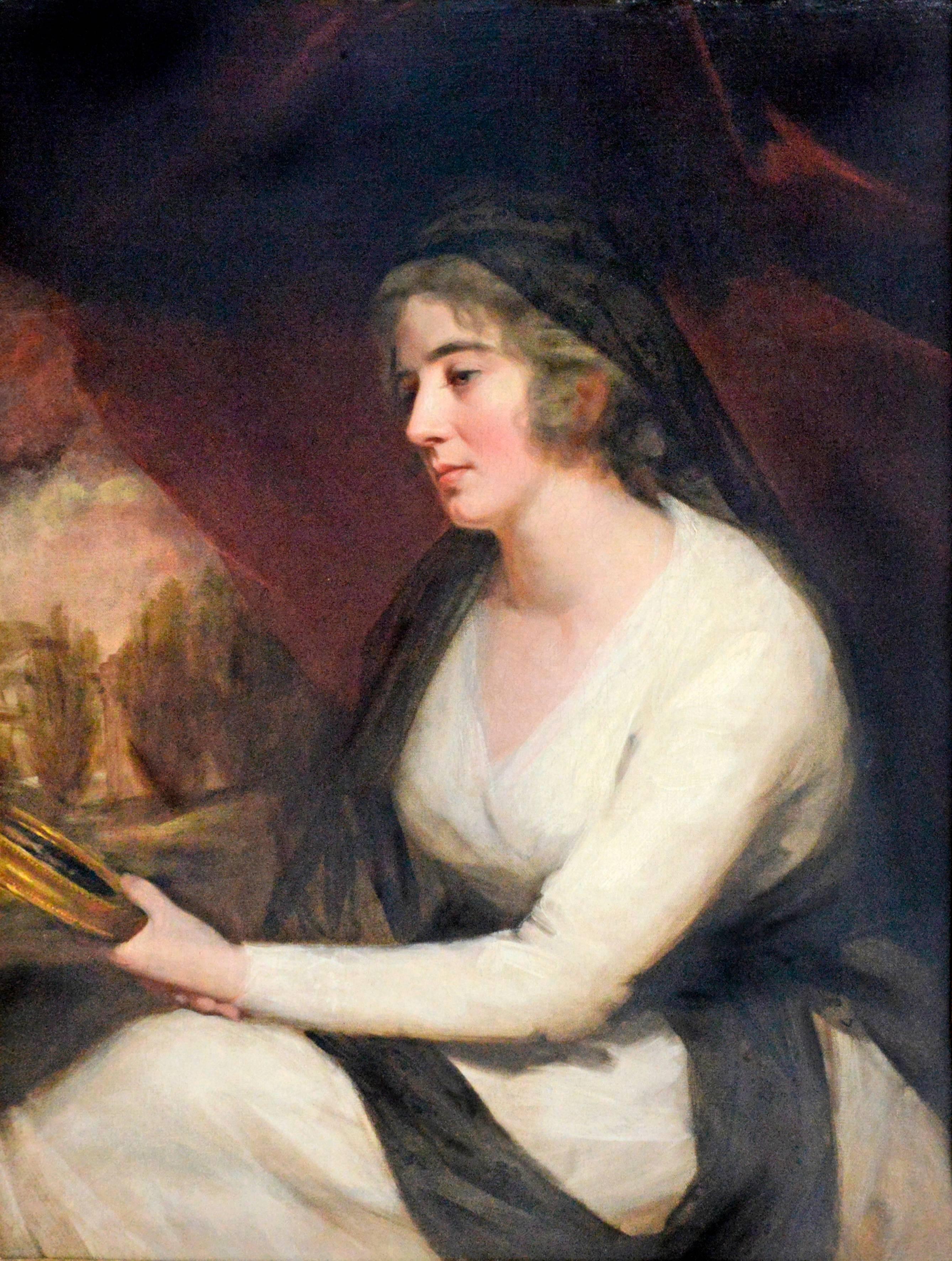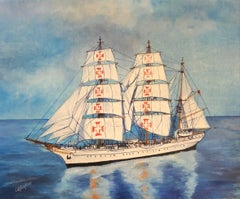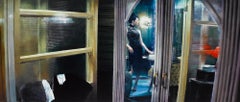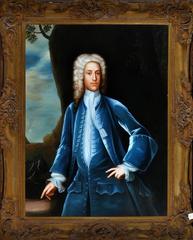
Very Large Aristocratic Portrait of 18th Century British Gentleman Oil Painting
View Similar Items
Want more images or videos?
Request additional images or videos from the seller
1 of 5
UnknownVery Large Aristocratic Portrait of 18th Century British Gentleman Oil Paintingc.1970's
c.1970's
About the Item
- Creation Year:c.1970's
- Dimensions:Height: 48 in (121.92 cm)Width: 36 in (91.44 cm)Depth: 2 in (5.08 cm)
- Medium:
- Movement & Style:
- Period:
- Condition:
- Gallery Location:Cirencester, GB
- Reference Number:Seller: AN239/160520171stDibs: LU50931865043

About the Seller
5.0
Platinum Seller
These expertly vetted sellers are 1stDibs' most experienced sellers and are rated highest by our customers.
Established in 1989
1stDibs seller since 2016
3,500 sales on 1stDibs
Typical response time: 2 hours
More From This SellerView All
- ANGLO-AMERICAN SCHOOL C. 1820'S - PORTRAIT OF MERCHANT ON SHIP WITH GLOBE & MAPLocated in Cirencester, GloucestershireArtist/ School: Anglo/ American School, early 19th century. Title: Full length portrait of a seated young gentleman wearing a dark suit, cream waistc...Category
Early 19th Century Realist Portrait Paintings
MaterialsOil, Canvas
- Sagres II Ship Portrait 20th Century, signed oil paintingBy Louis LetoucheLocated in Cirencester, GloucestershireSagres II, 1937 by Louis Letouche (French 1924-2015) oil painting on linen canvas, stretched over board framed Framed size: 18.25 x 13.75 inches Superb oil painting by the well listed French marine artist Louis Letouche (1924-2015). The painting portrays a Portugese Ship from the early 20th Century, titled: Sagres II. The three-masted ship was launched under the name Albert Leo Schlageter on 30 October 1937 at Blohm & Voss in Hamburg for Nazi Germany's Kriegsmarine. The ship was named after Albert Leo Schlageter, who was executed in 1923 by French forces occupying the Ruhr area. Her first commander was Bernhard Rogge. Sagres is a sister ship of the Gorch Fock, the Horst Wessel, and the Romanian training vessel Mircea. Another sister, Herbert Norkus, was not completed, while Gorch Fock II was built in 1958 by the Germans to replace the ships lost after the war. Following a number of international training voyages, the ship was used as a stationary office ship after the outbreak of World War II and was only put into ocean-going service again in 1944 in the Baltic Sea. On 14 November 1944 she hit a Soviet mine off Sassnitz and had to be towed to port in Swinemünde. Eventually transferred to Flensburg, she was taken over there by the Allies when the war ended and finally confiscated by the United States. In 1948, the U.S. sold her to Brazil for a symbolic price of $5,000 USD.She was towed to Rio de Janeiro where she sailed as a school ship for the Brazilian Navy under the name Guanabara. In 1961, Ambassador Teotónio Pereira of Portugal, who was also a man of the sea...Category
1990s Realist Portrait Paintings
MaterialsOil
- Sagres Ship Portrait signed oil paintingBy Louis LetoucheLocated in Cirencester, GloucestershireSagres, 1937 by Louis Letouche (French 1924-2015) oil painting on linen canvas, stretched over board framed Framed size: 16 x 19 inches Superb oil painting by the well listed French marine artist Louis Letouche (1924-2015). The painting portrays the early 20th Century ship titled: Sagres, 1937. The three-masted ship was launched under the name Albert Leo Schlageter on 30 October 1937 at Blohm & Voss in Hamburg for Nazi Germany's Kriegsmarine. The ship was named after Albert Leo Schlageter, who was executed in 1923 by French forces occupying the Ruhr area. Her first commander was Bernhard Rogge. Sagres is a sister ship of the Gorch Fock, the Horst Wessel, and the Romanian training vessel Mircea. Another sister, Herbert Norkus, was not completed, while Gorch Fock II was built in 1958 by the Germans to replace the ships lost after the war. Following a number of international training voyages, the ship was used as a stationary office ship after the outbreak of World War II and was only put into ocean-going service again in 1944 in the Baltic Sea. On 14 November 1944 she hit a Soviet mine off Sassnitz and had to be towed to port in Swinemünde. Eventually transferred to Flensburg, she was taken over there by the Allies when the war ended and finally confiscated by the United States. In 1948, the U.S. sold her to Brazil for a symbolic price of $5,000 USD. She was towed to Rio de Janeiro where she sailed as a school ship for the Brazilian Navy under the name Guanabara. In 1961, Ambassador Teotónio Pereira of Portugal, who was also a man of the sea...Category
1990s Realist Portrait Paintings
MaterialsOil
- Fine 19th Century French Realist Oil Painting Chef in Kitchen Pantry LarderLocated in Cirencester, GloucestershireLe Chef circle of Théodule-Augustin Ribot (French, 1823 – 1891) oil on board, framed framed: 20.5 x 16.5 inches board: 15 x 12 inches inscribed verso provenance: private collection, ...Category
19th Century Realist Figurative Paintings
MaterialsOil
- Herzogin Cecilie, signed oil paintingBy Louis LetoucheLocated in Cirencester, GloucestershireHerzogin Cecilie, 1902 by Louis Letouche (French 1924-2015) oil painting on linen canvas, stretched over board framed Framed size: 15 x 21.75 inches Superb oil painting by the well listed French marine artist Louis Letouche (1924-2015). The painting portrays the early 20th Century ship titled: Herzogin Cecilie, 1902. Herzogin Cecilie was built in 1902 by Rickmers Schiffbau AG in Bremerhaven. She was yard number 122 and was launched on 22 April 1902. Completion was on 7 June that year. She was 334 feet 8 inches (102.01 m) long, with a breadth of 46 feet 3 inches (14.10 m) and a draught of 24 feet 2 inches (7.37 m). Herzogin Cecilie was built for Norddeutscher Lloyd Bremen. Unlike other contemporary German merchant sailing ships, the black Flying-P-Liners or the green ships of Rickmers, she was painted in white. She was one of the fastest windjammers ever built: she logged 21 knots at Skagen. The tall ships of the time remained competitive against the steamers only on the longer trade routes: the Chilean nitrate trade, carrying salpeter from Chile to Europe, and the Australian wheat trade, carrying grain from Australia to Europe. Both routes required rounding Cape Horn routinely, and were not well suited for steamers, as coal was in short supply there. Herzogin Cecilie was one of the fastest merchant sailing ships of her time, on a par with the Flying-P-Liners. The trip around Cape Horn from Portland (Oregon) to The Lizard (England) was done in 1903 in only 106 days. At the outbreak of World War I, she was interned by Chile, returning to Germany in 1920, only to be given to France as reparation, and subsequently sold to Gustaf Erikson (24 October 1872 – 15 August 1947) of Finland for £4250. She was homeported at Mariehamn.[2] As the freight rates for salpeter had dropped after the war, Gustaf Erikson sent her to bring grain from Australia. In so-called grain races, several tall ships tried to arrive first in Europe, to sell their cargo for a higher price, as told, for example, in The Great Tea Race of 1866 or The Last Grain Race. Typically, ships were loaded in the Spencer Gulf area, Port Victoria, South Australia or Wallaroo, South Australia, and travelled to Europe, with ports on the British Isles like Queenstown, Ireland or Falmouth, Cornwall being considered as the finish. After "winning" four times prior to 1921, she again won the grain race four times in eleven trips from 1926 to 1936. In 1927, when Herzogin Cecilie covered Port Lincoln (South Australia) –Falmouth, London and won a race against the Swedish ship Beatrice. Alan Villiers was on board, which would result in his book Falmouth for Orders, and later a trip aboard the barque Parma. Wreck of the Herzogin Cecilie in south Devon. With Sven Erikson as her Captain and Elis Karlsson her First Mate, the ship left Port Lincoln in South Australia on 21 January 1935, with a cargo of wheat, and after taking a more southerly route than usual, reached Falmouth for Orders on 18 May making her passage of 86 days the second fastest ever. Herzogin Cecilie was making for Ipswich in dense fog, when, on 25 April 1936, she grounded on Ham Stone Rock and drifted onto the cliffs of Bolt Head on the south Devon coast. After parts of the cargo were unloaded, she was floating again, only to be towed in June 1936 to Starhole (Starehole) Bay at the mouth of the nearby Kingsbridge Estuary near Salcombe, and beached there.On 18 January 1939, the ship capsized and sank. The remains of the ship sit at a depth of 7 metres at 50°12.82′N 3°47.02′W. The timber and brass portholes from the chart room...Category
1990s Realist Portrait Paintings
MaterialsOil
- Fine Pair Original Georgian Portrait Oil Paintings Husband & WifeBy Henry WyattLocated in Cirencester, GloucestershireVery fine and rare pair of Georgian portrait paintings, depicting a husband and wife couple - "Mr. and Mrs L'Estrange Southgate Austin". The painti...Category
Early 19th Century Realist Portrait Paintings
MaterialsOil
You May Also Like
- Portrait of Hope G. Simpson - British 1952 art female portrait oil paintingBy Gerald Leslie BrockhurstLocated in London, GBThis superb British realist portrait oil painting is by noted artist Gerald Leslie Brockhurst. It was painted in 1952 when Brockhurst was in his sixties and living in America since 1939. The sitter is Hope G. Simpson. The painting is a half length portrait of a striking blonde woman in a blue buttoned up Chinese style garment. It is a strong portrait with bold colours and confident brushwork and an excellent example of his work. Signed and dated 1952 lower right. Provenance. Hiram Hoelzer New York label verso. Portraits Inc. East Street new York. Label verso. Condition. Oil on canvas, 30 inches by 25 inches and in good condition. Frame. Housed in its original wooded frame, 37 inches by 32 inches and in good condition. Gerald Leslie Brockhurst (1890-1978) was a British painter and etcher. Brockhurst was born in the Edgbaston district of Birmingham on 31 October 1890, son of a coal merchant called Arthur Brockhurst, he soon showed precocious drawing skills and entered the Birmingham School of Art at the age of twelve. A pupil at the Royal Academy Schools in 1907, he won the gold medal and a travelling scholarship in 1913, enabling him to visit both France and Italy. This led to a closer study of such 15th-century artists as Piero della Francesca, Botticelli and Leonardo da Vinci, whose work had an abiding influence on him. In 1914 he married for the first time to a Frenchwoman, Anaïs Folin, whom he used as the model for most of his early etchings of young womanhood (especially from 1920 till 1934). From 1915 to 1919 Brockhurst and his wife Anaïs lived in Ireland, where they were friendly with the artist Augustus John and his circle. Though he tried his hand at etching in 1914, it was not until 1920 that he began his career as an etcher in earnest, eventually achieving success as both a printmaker and society portraitist. Brockhurst held his first important exhibition in 1919, in London, and after it was well received returned to live there. In 1921 he was one of the early members of the newly-formed Society of Graphic Art and exhibited with them. Throughout the 1930s he continued an increasingly successful career as a portrait artist, with notable sitters including the film stars Merle Oberon and Marlene Dietrich, as well as the Duchess of Windsor, whose husband commissioned her portrait. In 1937 Brockhurst was elected to the Royal Academy and was able to command a price of 1,000 guineas for a portrait. In the same year however details of his relationship with his young model Kathleen Woodward, whom he had renamed Dorette, were made public after she gave an interview to the Sunday Express. Brockhurst's marriage had previously come under strain in 1922 when his wife discovered his adultery with her sister, Marguerite, and now broke down acrimoniously, with Brockhurst counter-suing on the grounds of his wife's adultery. In August 1939 Brockhurst and Dorette moved to the United States, and he was eventually divorced from his first wife in 1940. He married Kathleen in 1947. In New York City, Brockhurst became both famous and rich with a series of society portraits but his printmaking output diminished, especially his etchings. He produced a few lithographs at the end of his career (around 1945). In 1951, he was elected into the National Academy of Design as an Associate member. In 1958, he appeared as a guest challenger on the TV panel...Category
1950s Realist Portrait Paintings
MaterialsOil
- Hotel Room (Woman in The Mirror)Located in Natchez, MSThis evocative oil painting by Girbent depicts a woman in a hotel room, visible in the viewers line of sight and also reflected in the mirror. His interior sings with detail while m...Category
2010s Realist Figurative Paintings
MaterialsCanvas, Oil
- Dr. LecterLocated in Natchez, MS"Dr. Lecter" is a portrait based on Anthony Hopkin's iconic portrayal of the character in Silence of the Lambs. Dr. Hannibal Lecter, though an absolute monster, had a charming side ...Category
2010s Realist Portrait Paintings
MaterialsCanvas, Oil
- [Bruce Sargeant (1898-1938)] Five Gymnasts in TrainingBy Mark BeardLocated in New York, NYOil on canvas Signed in red, u.r. $16,000.00 + framing This artwork is offered by ClampArt, located in New York City. “Bruce Sargeant is a mythic figure in the modern art movement...Category
21st Century and Contemporary Realist Figurative Paintings
MaterialsCanvas, Oil
- Sporting painting of a detailed close up of English Pointer pointing at a birdBy Beth de LoiselleLocated in Charleston, USThis elegant sporting painting "Catch The Scent" by Beth de Loiselle is a detailed close up of an English Pointer pointing at a bird while on the hunt....Category
2010s Realist Animal Paintings
MaterialsOil
- Realistic detailed oil painting of a Maine Coon cat painting in frameBy Beth de LoiselleLocated in Charleston, USBeth de Loiselle's "Maine Coon" , a detailed realist cat painting of a Maine Coon cat with a trompe l'oeil gold frame on a black background. The friendly Maine Coon cat is one of th...Category
21st Century and Contemporary Realist Animal Paintings
MaterialsOil
Recently Viewed
View AllMore Ways To Browse
British Gentry
18th Century Scottish Painting
Scottish Gentleman
Antique Black Velvet Paintings
Large Aristocratic Portrait
18th Century Scottish Portrait
19th Century Portrait Painting Lady
Oil Painting Beautiful Lady
White Court Art
19th Century Portraits Women
Women Portraits 19th Century
Women Portraits 19th Century
Lady In White Dress
Blue Lady Painting
19th Century Portraits Of Women
18th Century French Portrait Painting
19th Century Victorian Oil Portrait
Gerard Oil Painting

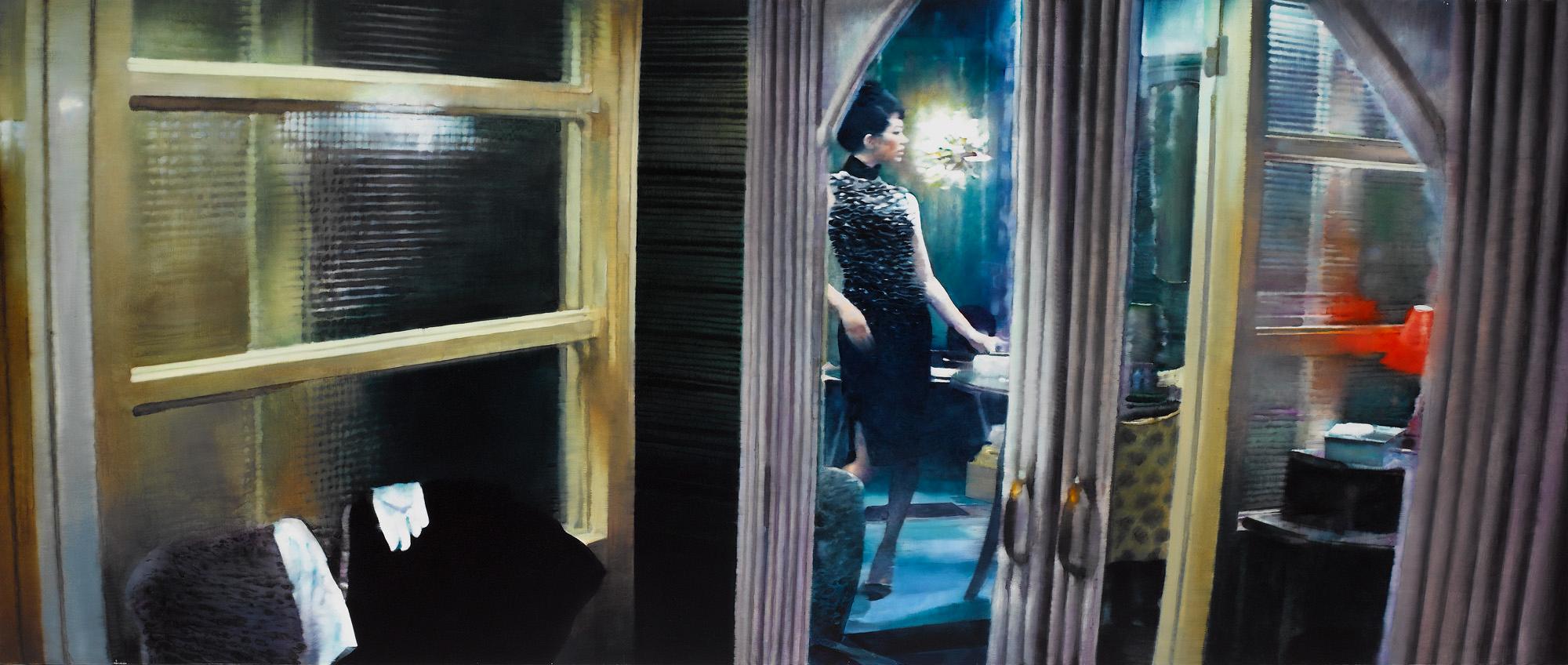
![[Bruce Sargeant (1898-1938)] Five Gymnasts in Training](https://a.1stdibscdn.com/mark-beard-paintings-bruce-sargeant-1898-1938-five-gymnasts-in-training-for-sale/a_9323/a_34005411539182323410/04_Five_Gymnasts_in_Training_980_master.jpg)

